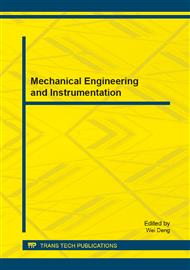[1]
IEEE Computer Society. 802. 15. 4: Wireless Medium Access Control (MAC) and Physical Layer (PHY) Specifications for Low-Rate Wireless Personal Area Networks (LR-WPANs). Available at: http: /standards. ieee. org/getieee802/download/802. 15. 4-2003. pdf.
DOI: 10.1109/ieeestd.2006.232110
Google Scholar
[2]
Axel Sikora1, Voicu F. G. Coexistence of IEEE802. 15. 4 with other Systems in the 2. 4 GHz-ISM-Band. Instrumentation and Measurement Technology Conference, Ottawa, Canada, (2005).
Google Scholar
[3]
Wenqi G, Healy W. M, MengChu Z. Impacts of 2. 4-GHz ISM Band Interference on IEEE 802. 15. 4 Wireless Sensor Network Reliability in Buildings. IEEE Transactions on Instrumentation and Measurement, 61(9), 2012, pp.2533-44.
DOI: 10.1109/tim.2012.2188349
Google Scholar
[4]
IEEE Computer Society. Local and metropolitan area networks - Specific requirements Part 11: Wireless LAN Medium Access Control (MAC) and Physical Layer (PHY) Specifications. Available at: http: /standards. ieee. org/getieee802/download/802. 11-2007. pdf.
DOI: 10.1109/ieeestd.2011.5716530
Google Scholar
[5]
J. -H. Hauer, V. Handziski, and A. Wolisz. Experimental Study of the Impact of WLAN Interference on IEEE 802. 15. 4 Body Area Networks.
DOI: 10.1007/978-3-642-00224-3_2
Google Scholar
[6]
R. Musaloiu-E. and A. Terzis. Minimising the Effect ofWiFi Interference in 802. 15. 4 Wireless Sensor Networks. International Journal of Sensor Networks, 3(1), 2007, p.43–54.
Google Scholar
[7]
C. Won, J. -H. Youn, H. Ali, et al. Adaptive Radio Channel Allocation for Supporting Coexistence of 802. 15. 4 and 802. 11b. In VTC, (2005).
DOI: 10.1109/vetecf.2005.1559004
Google Scholar
[8]
C.J. M. Liang, J. Liu, L. Luo, et al. Zhao. RACNet: A High-Fidelity Data Center Sensing Network. In SenSys, (2009).
Google Scholar
[9]
G. Zhou, Y. Wu, T. Yan, T. et al. A multi-frequency mac specially designed for wireless sensor network applications. ACM Transactions in Embedded Computing Systems, 9, (2010).
DOI: 10.1145/1721695.1721705
Google Scholar
[10]
Yuan W, Wang X. Y, et al. Coexistence Performance of IEEE 802. 15. 4 Wireless Sensor Networks Under IEEE 802. 11b/g Interference. Wireless Pers Commun, 68(2), 2013, pp.281-302.
DOI: 10.1007/s11277-011-0452-y
Google Scholar
[11]
Chieh-Jan M. L, Nissanka B. P, et al. Surviving Wi-Fi Interference in Low Power ZigBee Networks. SenSys'10, Zurich, Switzerland, (2010).
Google Scholar


